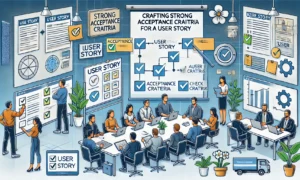Being a Product Manager (PM) is an exciting, dynamic, and ever-evolving role. For those considering a career in product management, understanding what a typical day looks like can help you navigate the path ahead. Let’s take a deep dive into the daily tasks, challenges, and highlights that come with the job.
Morning: Organizing & Planning
The day typically starts early, with the first hour dedicated to reviewing emails, Slack messages, and task lists. A PM is the central hub between various teams—engineering, design, marketing, and customer support—so staying on top of communication is critical.
Key Activities:
- Reviewing urgent issues or updates from the team.
- Checking on progress with ongoing product developments or sprints.
- Prioritizing the day’s tasks based on urgency and impact.
At this point, PMs will also review product roadmaps, aligning on goals for the week or month. The morning is also when PMs meet with senior leaders or stakeholders to ensure alignment on product vision and updates.
Mid-Morning: Team Collaboration & Problem Solving
A core part of a PM’s day revolves around collaborating with cross-functional teams. This can mean standing meetings like daily scrums or more in-depth strategy sessions. During this time, PMs provide updates, share feedback, and help teams solve problems.
Key Activities:
- Sprint meetings or daily stand-ups with engineering teams to track progress.
- Design reviews or brainstorming sessions to refine new product features.
- Syncing with marketing or sales teams on product positioning or upcoming launches.
Being a PM means constantly balancing between listening to the needs of teams and pushing forward the broader product strategy. The role requires a lot of problem-solving, as new challenges or roadblocks often arise throughout the day.
Lunch Break: Recharging & Reflecting
PMs don’t just run from meeting to meeting—they also make time to recharge. Whether it’s grabbing lunch or a short walk outside, taking a breather is essential for maintaining focus throughout the rest of the day.
Afternoon: Analysis & Deep Work
After lunch, the PM typically shifts into analysis mode. This is the time to dive into customer feedback, metrics, and performance data. By analyzing usage patterns, customer surveys, or A/B testing results, PMs can inform decisions about product iterations or new features.
Key Activities:
- Analyzing user data, conversion rates, or product performance.
- Reviewing customer feedback or bug reports to prioritize the backlog.
- Writing documentation, updating roadmaps, or preparing for upcoming meetings.
This part of the day is often when PMs deep dive into the product, making data-driven decisions and outlining next steps for development or iteration.
Late Afternoon: Planning for Tomorrow
As the day comes to a close, the PM’s focus shifts back to planning. They wrap up meetings, check in on the status of various projects, and set priorities for the following day.
Key Activities:
- Reviewing the day’s accomplishments and ensuring teams have what they need.
- Preparing for the next day’s meetings or strategic sessions.
- Reflecting on team performance and potential adjustments for smoother workflows.
Before closing the laptop, many PMs also take the time to address any last-minute issues, from clarifying requirements to re-prioritizing tasks based on new insights.
Challenges & Highlights
A PM’s day can be intense and unpredictable. The constant juggling of priorities, managing cross-functional relationships, and navigating shifting goals can be challenging. However, the role also brings significant rewards. Seeing a product launch successfully, watching users engage with features you’ve helped develop, and knowing that your efforts drive meaningful impact are some of the most fulfilling aspects of being a PM.
In Conclusion
Being a Product Manager isn’t a typical 9-to-5 job. It’s about leading a team through a maze of tasks, decisions, and strategies to deliver valuable products to users. While every day presents its own set of challenges, the excitement of solving complex problems and pushing products forward makes the PM role a rewarding career choice for many.



